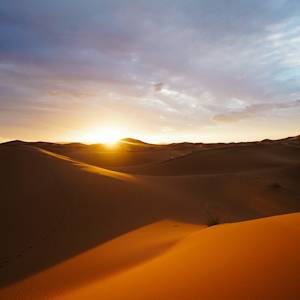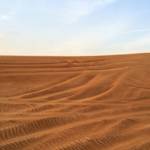Atacama Desert
2022 CE • Chile
"The Atacama Desert is considered one of the driest coastal deserts in the world. It forms a continuous strip for nearly 1,000 km along the narrow coast of the northern third of Chile. It is a sparsely populated and rainless plateau, running east from the Pacific Ocean to the Andes Mountains . . . The Atacama Desert is almost without vegetation, except along slopes moistened by drizzle during the winter or in mesic valleys that bisect the otherwise xeric desert. These valleys support plant communities composed of trees and other shrubby and herbaceous plants . . . Most threats to this ecoregion are closely associated with urbanization, pollution, road construction, livestock grazing, fuelwood gathering, commercial plant collecting, and erosion. Road construction in association with mining operations is increasing human settlement in the region as well. With the rise in copper prices during the 1980s, reactivation of mining activities utilizing large quantities of sulphuric acid has also had an essentially undocumented impact on terrestrial and marine life." Every few years, the desert hosts an unexpected bloom of flowers. The spectacle, which gathers intenational attention, prompted the Chilean government in 2022 to protect the desert as a national park.
Jan Schipper, "Atacama Desert," One Earth.
Image: Wescottm, CC BY 4.0, via Wikimedia Commons


Learn about Maya Lin’s fifth and final memorial: a multi-platform science based artwork that presents an ecological history of our world - past, present, and future.

Discover ecological histories and stories of former abundance, loss, and recovery on the map of memory.

Learn how we can reduce our emissions and protect and restore species and habitats – around the world.

See how art can help us rethink the problems we face, and give us hope that each one of us can make a difference.

Help make a global memorial something personal and close to home. Share your stories of the natural world.


